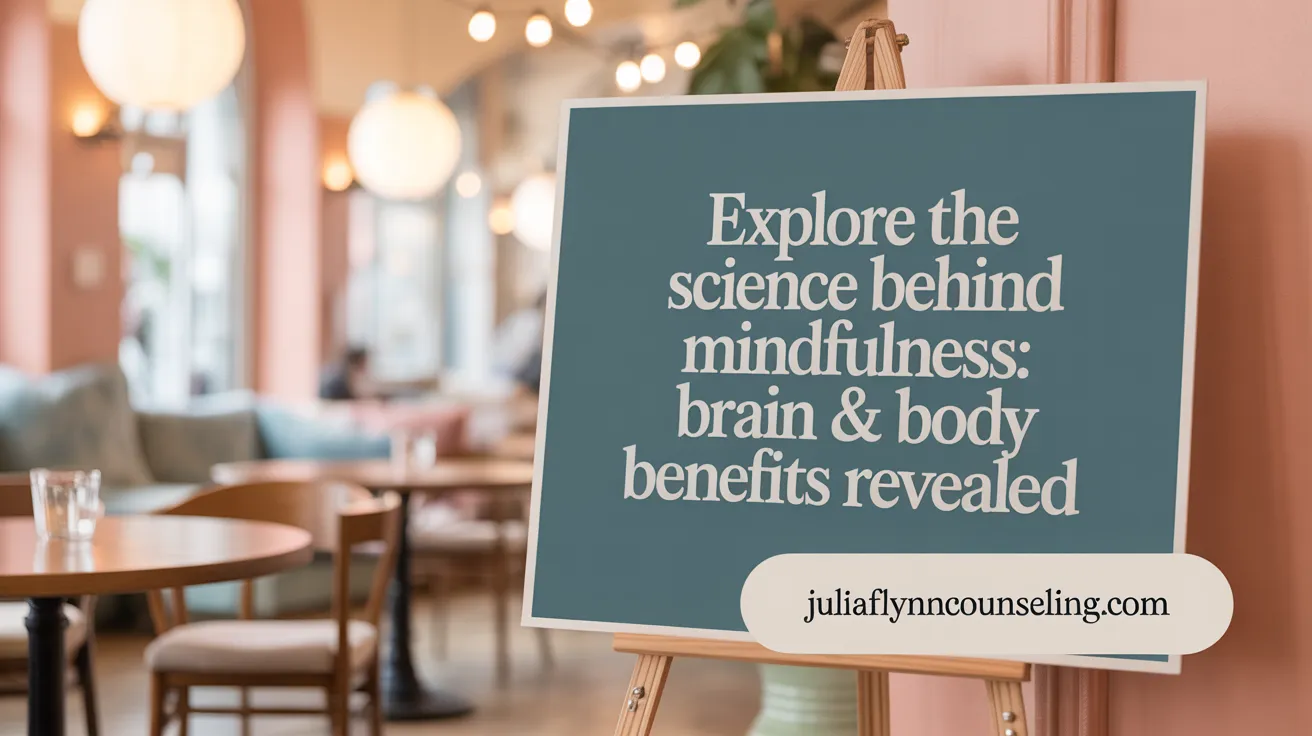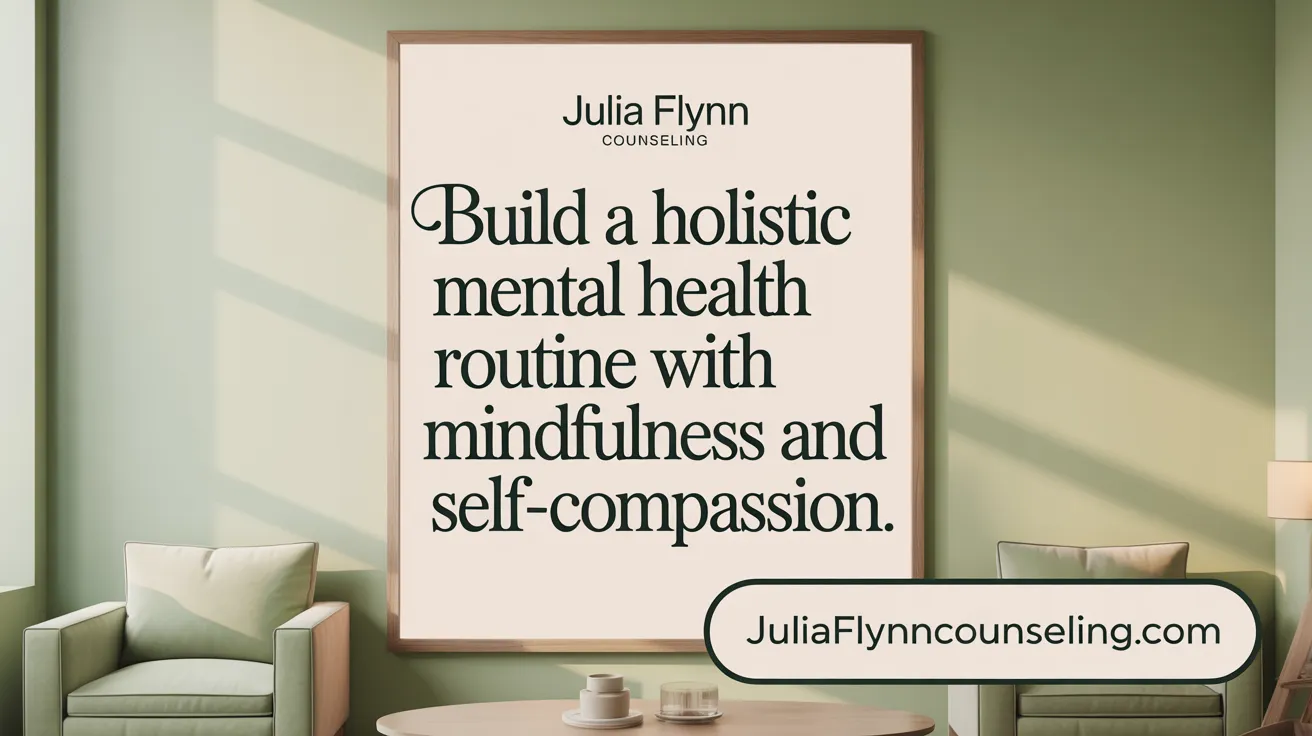Why Mindfulness Matters Today
In an era marked by fast-paced lifestyles and rising mental health challenges, mindfulness emerges as a beacon for maintaining emotional balance and enhancing well-being. Rooted in ancient practices but supported by modern science, mindfulness offers practical techniques for integrating awareness and presence into daily life. This article explores how mindfulness can be seamlessly incorporated into daily mental health routines, highlighting its benefits, exercises, and the science behind its effectiveness.
Understanding Mindfulness and Its Multifaceted Benefits

What is mindfulness and what benefits does it offer?
Mindfulness is the practice of maintaining moment-to-moment awareness of one's thoughts, feelings, bodily sensations, and surroundings without judgment. This intentional focus allows a person to experience the present fully and respond to situations with greater calm and clarity. Learn more about What is mindfulness?
How does mindfulness support mental health?
Mindfulness reduces stress and anxiety by activating the body's relaxation response. It helps manage symptoms of depression by decreasing rumination—repetitive negative thinking—and promotes emotional resilience. Regular practice improves mood, lowers cortisol levels (stress hormone), and can reduce symptoms of anxiety, depression, and insomnia. Explore the benefits of Mindfulness and stress reduction and its role in Mindfulness for mental health.
What are the physical health benefits of mindfulness?
Beyond mental well-being, mindfulness improves physical health by enhancing sleep quality, lowering blood pressure, and reducing inflammation linked to stress. It has been found to alleviate symptoms in health conditions such as fibromyalgia, rheumatoid arthritis, psoriasis, Type 2 diabetes, and hypertension. For more details, see Mindfulness for Health Conditions and Physical Health Benefits of Mindfulness.
How does mindfulness aid emotional regulation?
By fostering non-judgmental awareness, mindfulness allows individuals to observe difficult emotions without impulsive reactions. This leads to decreased emotional reactivity and greater cognitive flexibility, enabling healthier responses to stressful or challenging situations. Learn about Emotional Stability through Mindfulness and Emotional regulation through mindfulness.
What cognitive improvements are associated with mindfulness?
Mindfulness practice boosts attention span, working memory, and concentration by training the brain to remain centered in the present moment. It enhances cognitive flexibility, allowing better adaptation to changing circumstances and improved executive function. Discover more on Boosting Focus with Mindfulness and Improving attention with mindfulness.
How does mindfulness enhance relationships?
Mindfulness promotes greater empathy, compassion, and self-awareness, improving communication and the ability to manage relationship stress. This leads to increased relationship satisfaction and healthier interpersonal interactions. See additional insights on Mindfulness and Relationship Satisfaction and Mindfulness for Healthy Relationships.
In summary, mindfulness is a powerful practice that benefits mental, emotional, cognitive, and physical health. With consistent practice, it can foster resilience, well-being, and improved quality of life across multiple dimensions. For a comprehensive overview, refer to Long-term Benefits of Mindfulness.
Incorporating Mindfulness Exercises into Daily Life

Types of Mindfulness Exercises
Mindfulness can be practiced through various exercises designed to enhance present-moment awareness and reduce stress. Common types include mindful breathing, body scan meditation, mindful walking, and guided imagery. These practices focus on tuning into bodily sensations, breath, and the environment without judgment.
Breathing Techniques
One foundational exercise is mindful breathing, where attention is gently centered on the flow of breath. This simple technique can calm the mind and body, helping to reduce anxiety and improve focus. It is often used as an anchor in meditation.
Body Scan
The body scan is a structured exercise where attention moves slowly through different body parts, noticing sensations without trying to change them. This promotes relaxation and improves bodily awareness, aiding in emotional regulation.
Mindful Walking
Mindful walking involves focusing fully on the sensations of movement and contact with the ground. It helps cultivate presence in everyday activity, supporting mental clarity and stress relief. For more on mindful walking and similar exercises, see mindfulness exercises and tips.
Guided Imagery
Guided imagery uses visualization to transport the mind to calming, peaceful scenes. This can evoke relaxation and reduce physical tension. Resources like guided imagery relaxation offer deeper insight.
Recommended Practice Durations
Starting with 5 to 10 minutes daily can yield benefits, ideally in a quiet space free from distractions. Over approximately six months, consistent practice can make mindfulness part of daily routine, becoming effortless and supportive of ongoing mental well-being. For detailed guidance, refer to long-term benefits of mindfulness.
How can mindfulness exercises be integrated into daily routines?
Integrating mindfulness exercises into everyday life can be done by setting aside regular times for meditation practices like mindful breathing or body scans. Additionally, mindfulness can be embedded in daily activities such as eating, walking, or even waiting, through focused attention on sensations and surroundings. These repeated moments of present-moment awareness reduce stress and support emotional balance. Practical suggestions and examples can be found at incorporating mindfulness tips and mindfulness in daily life.
Scientific Insights: How Mindfulness Positively Impacts the Brain and Body

What does research reveal about mindfulness and its effects on the brain and body?
Mindfulness practice brings about significant neurological and physiological changes that benefit both mental and physical health. Studies have found increased activity in the prefrontal cortex, the brain region responsible for executive functions and emotional regulation. At the same time, mindfulness decreases activity in the amygdala, which governs stress and fear responses. This neural shift helps reduce emotional reactivity and promotes emotional stability.
In addition, regular mindfulness practice enhances gray matter density in areas linked to memory and learning. These brain changes support better attention, cognitive flexibility, and improved working memory.
Beyond the brain, mindfulness influences the body's stress hormone regulation. It lowers cortisol levels, a hormone closely tied to stress and inflammation. Reducing cortisol helps decrease chronic inflammation, which is beneficial for overall health and supports a stronger immune system.
Physiologically, mindfulness also improves sleep quality and helps regulate blood pressure, contributing to heart health.
Clinically, mindfulness has been shown to ease symptoms of anxiety, depression, post-traumatic stress disorder (PTSD), and other psychological conditions. By fostering a state of calm and enhancing self-awareness, mindfulness cultivates resilience and promotes healthier responses to stressors.
Through these neurological and bodily effects, mindfulness provides a powerful, evidence-based approach to improving mental well-being and physical health.
Practical Tips for Building Mindfulness into Your Routine
What are effective strategies for establishing mindfulness as a daily habit?
Starting small is essential when introducing mindfulness into daily life. Begin with short, manageable habits such as a brief mindful breathing exercise or a simple wakeup meditation. Morning mindfulness rituals help set a calm and positive tone for the day, making it easier to stay present and focused (Morning Mindfulness Routine).
Using natural triggers and cues throughout the day enhances mindfulness consistency. For example, pausing mindfully when transitioning between tasks or during scheduled notifications creates reminders to practice mindfulness. These micro-mindfulness moments build awareness without overwhelming daily schedules (Micro-Mindfulness Practices at Work).
Integrating mindful movement and eating into everyday activities makes mindfulness practical and accessible. Focusing attention on the sensations during walking, stretching, or eating helps cultivate presence in ordinary routines. This method encourages a natural transition into mindful habits without requiring special time blocks (Mindful Movement Techniques, Mindful Eating Practices).
Mindful pauses, like the STOP technique, provide quick ways to check in with oneself amidst busy days. These moments allow observing thoughts and emotions without judgment, aiding emotional regulation and stress reduction (Mindfulness for Emotional Regulation).
Overcoming challenges in establishing mindfulness involves embracing imperfection and being patient. Regular short practices can gradually lengthen as comfort grows. Supports such as mindfulness apps, group classes, and online resources help maintain motivation and provide guidance (Mindfulness group courses).
By combining these strategies, mindfulness can seamlessly weave into daily life, offering lasting mental, emotional, and physical health benefits (Long-term Benefits of Mindfulness).
Mindfulness as Part of a Holistic Mental Health Routine

How does mindfulness complement other mental health routines and practices?
Mindfulness plays a crucial role in enhancing mental health by integrating seamlessly with various wellness practices. By reducing stress with mindfulness and fostering emotional regulation, mindfulness supports activities such as adequate sleep, regular exercise, and journaling, making these habits more effective and easier to maintain (Mindfulness and Mental Health).
Establishing and maintaining routines
Consistent daily routines that include mindfulness create stability, reduce decision fatigue, and help manage mental energy. Regular sleep schedules, dedicated stress management times, and prioritizing important tasks alongside mindful breathing or meditation build a reliable framework for mental well-being (Psychological Benefits of Routine).
Managing mental health symptoms through mindfulness
Mindfulness encourages early recognition of emotional distress, allowing individuals to respond promptly with self-care or seek professional help when necessary. Techniques such as body scans and mindful breathing help interrupt cycles of rumination and anxiety (Mindfulness and Mental Health.
The role of self-compassion and reflection
Self-compassion cultivated through mindfulness promotes acceptance of emotions without harsh judgment. Reflection practices like journaling increase self-awareness, enabling healthier responses to mental health challenges (Self-care for Mental Health, Mindfulness Support Resources.
Enhancing social connections with mindful awareness
Being present and attentive during social interactions deepens emotional connections and provides stronger support networks. Mindful communication can improve relationship satisfaction and reduce interpersonal stress (Mindfulness and Relationship Satisfaction).
Professional support as part of a comprehensive approach
Mindfulness complements professional therapies and medical treatments, offering skills that improve emotional regulation and stress management. Healthcare providers often encourage mindfulness as part of broader treatment plans to optimize mental health outcomes (Mindfulness in Therapy Practice, Mindfulness and Psychotherapy Outcomes.
Together, mindfulness and complementary mental health routines create a synergistic, holistic approach that promotes resilience, emotional balance, and overall well-being (The Power of Routine).
Mindfulness Across Life Stages and Settings
How is mindfulness adapted for different groups and environments?
Mindfulness is a versatile practice tailored to meet the needs of diverse groups and settings. For children and adolescents, mindfulness programs focus on age-appropriate techniques like breathing exercises, visualizations, and simple meditation to boost attention and emotional regulation. Such interventions have shown to reduce anxiety and improve focus, offering young people tools to navigate stress effectively.
In the workplace, mindfulness is integrated through micro-practices that fit into busy schedules. These include quick body scans, mindful pauses, deep breathing, and gratitude moments that enhance emotional intelligence, decision-making, and stress management without disrupting workflow (7 Ways to Weave Mindfulness into Your Workday.
Individuals with chronic illnesses often benefit from structured programs like Mindfulness-Based Stress Reduction (MBSR). These evidence-based approaches use meditation, body scanning, and mindful movement to reduce symptoms of conditions such as fibromyalgia, hypertension, and rheumatoid arthritis, improving patients' quality of life and emotional resilience.
To increase accessibility, group mindfulness programs offer therapeutic benefits alongside social support. Group-based mindfulness therapy can be as effective as cognitive-behavioral therapy for conditions like anxiety and depression (Mindfulness exercises techniques. Meanwhile, individual mindfulness exercises empower self-guided practice through techniques such as mindful breathing and walking meditation (Mindfulness exercises.
The rise of digital resources and apps has further expanded mindfulness access, providing guided meditations, visualizations, and habit trackers. These tools accommodate varying experience levels and schedules, making mindfulness a flexible option for many (How to look after your mental health using mindfulness.
Overall, mindfulness's adaptability ensures it supports mental health and wellbeing across all ages and environments, from classrooms and clinics to offices and homes (Mindfulness in Schools and Workplaces).
Embracing Mindfulness for Lasting Mental Well-Being
Incorporating mindfulness into daily mental health routines presents a scientifically supported and accessible approach to enhancing emotional resilience, cognitive function, and physical health. By understanding mindfulness, practicing varied exercises, and establishing consistent habits, individuals can experience profound benefits that permeate all areas of life. Tailored approaches make mindfulness relevant across ages and contexts, reinforcing its role as a versatile tool for mental wellness. With patience and commitment, mindfulness can become an empowering daily companion on the journey toward balanced and sustained mental well-being.
